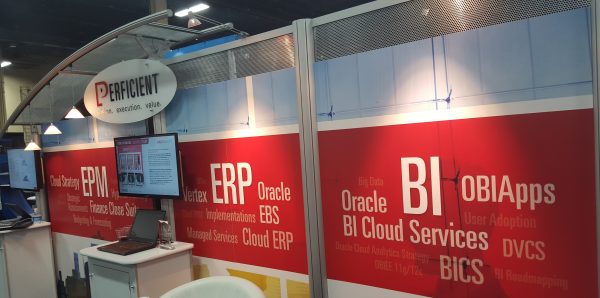
When it comes to choosing the right data integration solution, Oracle offers multiple products that may seem redundant but in fact target different purposes even though an overlap in the capabilities exists. Oracle clarified the distinctions among the various integration products during the Collaborate 16 conference this year. The decision making process around which data integration tool to use is primarily driven by the following factors:
- Time Lag Expectation: For example, real-time vs near real-time vs delayed.
- Process Model: Some integration processes are not just about the data moving from one place to the other but also about how the data flows. For instance, processing a sales order requires doing validations along the way as data moves from one system to another.
- Data Volume & Frequency: How much data we are dealing with and how frequently the integration needs to happen.
- Complexity: Some integrations require that data be transformed as it moves into another system. This may be to adhere to certain standards specific to an industry, for example, or enrich the data with other sources of information.
- Dependency on Business Input/Human Interaction
Following is a list of the various Oracle products for integration and what their main purpose is:
- SOA Suite – Service Bus: This is optimal for real-time high spead immediate messaging. It is mostly applicable for service virtualization. The service bus operates in a stateless mode so its less concerned with storing data and more with communicating between various system end points. It enables caching to achieve higher performance. An example of this usage would be in any ticket reservation system that is expected to send and retrieve information immediately about availability, quotes and confirmations.
- SOA Suite – BPEL: This is most suitable for process orchestration when there are multiple validations from multiple data sources and long running processes happening along the way of data movement. BPEL supports asynchronous messages with multiple requests and responses as in the case of the order to cash for credit card validation. BPEL may include human intervention as well. Correlation between the multiple requests and responses can be either handled automatically via web services or with other capabilities within BPEL. Many times applications already have their own workflows and therefore if we are only integrating data with that application, it is best to leverage those workflows. However, to support cross-application integration, having a separate integration tier like BPEL is the recommended approach. While Service Bus may handle complex processes, it would be a lot easier to develop and maintain those using BPEL as it offers a single view of all the different data flows.
- Business Process Management (BPM) Suite: BPM is specialized in human interaction. When it comes to automating manual processes while still relying on the human element for business input, BPM is the tool of choice from Oracle. BPM is available in both on-prem and in Cloud. Some examples of where BPM is applicable is for recruiting by HR or credit approval for financial services.
- Integration Cloud Service (ICS): ICS is characterized by its ease of development and allows for easier integrations of both on-prem and in Cloud SaaS Applications. ICS comes with rich pre-built SaaS adapters and is managed through an internet browser so minimal effort is required to configure it. Integrations among Salesforce, EBS and Oracle CX Cloud for instance are best done via ICS.
- Oracle Data Integrator (ODI): This serves data centric solutions such as Data Warehouses and data migration. ODI is great for chaining batch ELT jobs and complex transformations.
- GoldenGate: This is another data centric tool and serves to do real-time change data capture and messaging but less efficient for data transformation compared to ODI. GoldenGate works also for Cloud sources.
- API Manager & Catalog: This allows publishing, discovery of, subscribing to, managing, running and securing APIs. In addition, it allows for usage measurement of APIs.
- B2B for Business Protocols: This is useful for trading partner relationships for example. Communication is sometimes governed by standards such as Edifact, X12, or HL7. For instance, a manufacturing company may leverage the Oracle B2B adpater for communication with its suppliers.
In conclusion, finding the right tool requires asking the right questions on frequency, volume, nature of the data flow and complexity. And the answer is not always a single tool. There may be multiple options and the decision is driven by what constitutes the most dominant factors (as described above) that are applicable. In addition, the in-house skill-sets available to implement the integration plays a key role on which product gets adopted. However, caution should be taken on understanding the limitations of the tools and not taking them beyond their limits. And in certain circumstances the ideal solution utilizes more than one product.
